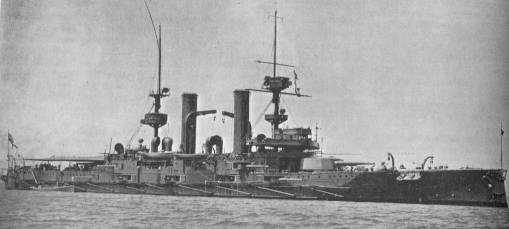|
The Chileans had chosen this caliber because they were intermediate in size between the standard British mixed secondaries of 6" (15.2 cm) and 9.2" (23.4 cm) guns. Neither the guns nor the mountings on these ships were identical to each other, a somewhat unusual affair in what were supposedly sister-ships. This is explained by the fact that the Mark III was built by Elswick while the Mark IV was manufactured by Vickers. One of the spare Mark III guns for HMS Swiftsure was used to arm the monitor M.26. In 1917, Swiftsure was decommissioned and two of her guns were then used to arm M.21 and M.23 while the other twelve were used for coast defense in Britain and Belgium. After HMS Triumph was sunk in May 1915, her two spare Mark IV guns were used to arm the monitors M.24 and M.25. Mark III was constructed of 'A' tube, breech piece, '1 B' tube and '2 B' tube, wire for 63% of length, 'B' tube and jacket with breech bush screwing into the 'A' tube, breech ring and a ring for connecting the hydraulic buffer to the barrel. Mark IV was 'A' tube, full length 'B' tube into which the breech bush for the Welin block was screwed, wire for 49% of length, jacket and screwed collar at the rear. There was a ring for connecting the hydraulic buffer, but no breech ring. Spare guns were designated as Mark III* and Mark IV*. The Mark III* differed in having an inner A tube, A tube, wire for 63% of the length, B tube and jacket with breech bush screwing into the A tube, breech ring and "ring connecting hydraulic buffer." The Mark IV* was constructed of inner A tube, A tube, wire for full barrel length, B tube and jacket. The breech bush screwed into the A tube. There was a ring for connecting the hydraulic buffer, but no breech ring. A total of fourteen Mark III, two Mark III*, fourteen Mark IV and two Mark IV* guns were manufactured. Nomenclature note: Despite their designations, these were actually the first 7.5" (19 cm) guns to enter service in the Royal Navy. |

HMS Swiftsure in 1908
|
| .
|